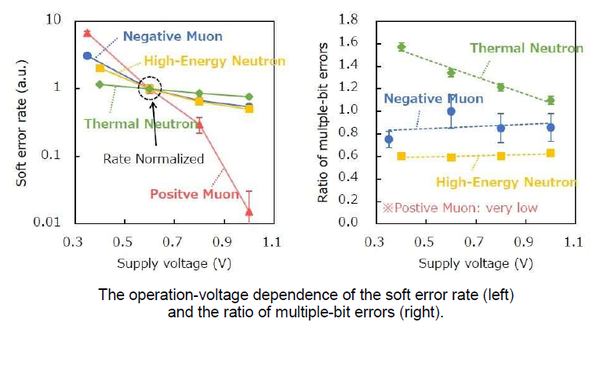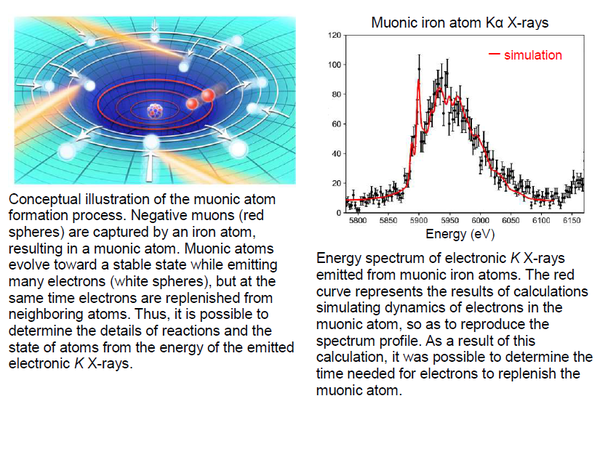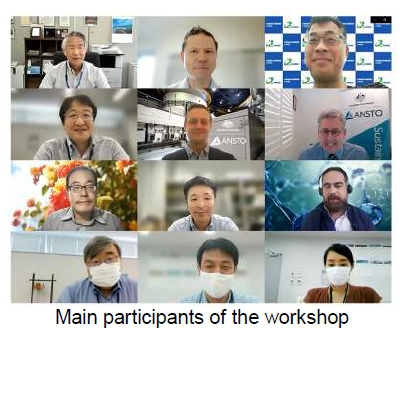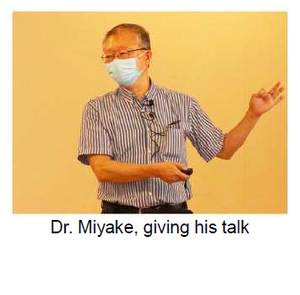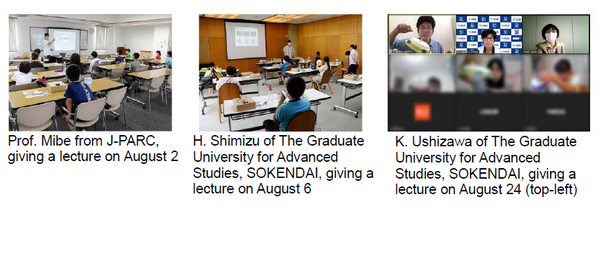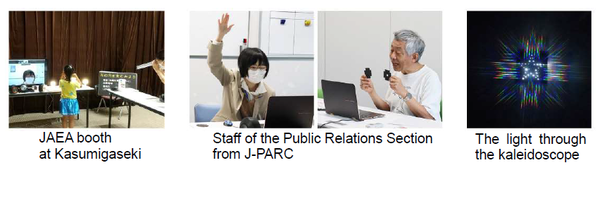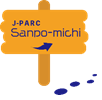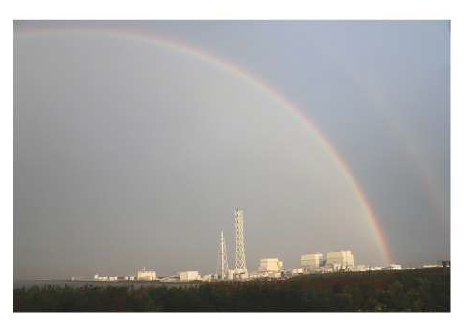J-PARC News August 2021 (Issue #196)
■Clarifying Difference between Semiconductor Soft Errors Caused by Cosmic-Ray Muons and Neutrons: Toward Developing Effective Technologies for Evaluating and Countering Environmental Radiation (July 16, Press Release)
Semiconductor devices are essential for social infrastructure based on modern digital technology. They face a problem called "soft errors," where electronic information in a device is upset by radiation. Cosmic ray neutrons have been considered to be a significant source of error. However, with the miniaturization of semiconductor devices and the lowering of operation voltage, soft errors caused by cosmic ray muons are becoming more critical.
Takashi Kato and his colleagues from Socionext Inc. investigated the soft error problem by using neutron and muon beams at J-PARC. They analyzed the soft error probability and occurrence of multiple-bit errors in semiconductor devices in operation. Negative and positive muons of Muon Science Establishment (MUSE) at the Materials and Life Science Experimental Facility (MLF) were used in the experiment. The figure shows that the operation voltage dependence of the soft error probability and the multiple-bit error rate is obviously different between the muon- and neutron-irradiation cases. The difference is attributed to the property of secondary ions produced in the nuclear reaction. These results are expected to lead to countermeasures against soft errors.
For details, please refer to the following article. https://j-parc.jp/c/en/press-release/2021/07/16000720.html
■Complete Picture of Muonic Atom Formation Process Revealed by Cutting-Edge Superconducting Detector: Femtosecond Dynamics of Negative Muons, Electrons, and Atomic Nuclei (July 26, Press Release)
In a muonic atom, one of the electrons of the atom is replaced with a negative muon. These atoms can be artificially produced with a quantum beam of muon available in accelerator. These atoms are useful for investigation of various phenomena and properties relating to muons, electrons, and atomic nuclei in special environments, and to understand the fundamental physics and radiochemistry. Since these atoms cause complex reactions in an extremely short time immediately after formation, many points regarding the formation mechanism remain unclear yet.
To determine the moment when a muonic atom is formed, and what occurs immediately afterward, Takuma Okumura, a Postdoctoral Researcher at RIKEN, and colleagues precisely measured the energy spectrum of electronic K X-rays emitted from muonic iron atoms by using superconducting transition-edge sensor microcalorimeters enabling measurement of X-ray energy with extremely high resolution. The experiment was performed using the high-intensity pulsed muon beam of MUSE at J-PARC MLF. Information on the arrangement and number of electrons contained in muonic atoms can be obtained from the energy spectra of the electronic K X-rays. By combining detailed analysis of the energy spectra with theoretical calculation, the researchers clarified the formation process for the first time by which a stable state is reached after a muon iron atom is formed. It is expected that this research will tie in with fundamental scientific research, i.e., precise verification of quantum electrodynamics in extreme environments, and it should also be useful in materials science research.
■Workshop with ANSTO on Mutual Cooperation in Field of Neutron Science Held (July 30)
The Australian Nuclear Science and Technology Organization (ANSTO), High Energy Accelerator Research Organization (KEK), and Japan Atomic Energy Agency (JAEA) concluded an agreement in 2015 on mutual cooperation in the field of neutron science, but in February of this year, a new cooperation agreement was signed. This agreement has an effective term of five years, and brings together four organizations—the three indicated above as well as the Comprehensive Research Organization for Science and Society (CROSS). To commemorate the signing of this new agreement, an online workshop was held with ANSTO on July 30. At this workshop, we looked back on the results of our previous cooperation, and confirmed that we will deepen our discussions by holding future workshops regarding three priority areas for cooperation going forward (dynamics measurement equipment, structure measurement equipment, and neutron-related technology).
*ANSTO started operation of the high-performance research reactor OPAL in 2007, and as a cutting-edge neutron facility, standing side-by-side with J-PARC's MLF, it is a highly-international research institution which attracts many users. J-PARC regards ANSTO as a model in many fields—such as their extensive knowledge of advanced sample environment equipment and sample synthesis at the National Deuteration Facility (NDF)—and there is lively exchange of information between the two organizations.
■J-PARC Hello Science, "Seeing with Muons" (July 30)
J-PARC Hello Science was held in July in a format combining an in-person lecture at the iVil Plaza with an online event. There were 11 participants at iVil and 10 participants online.
The instructor was Dr. Yasuhiro Miyake, Special Professor at the KEK Institute of Materials Structure Science (IMSS) and a member of the J-PARC Muon Science Section.
Muons react well with light elements and have extremely high penetration capability, and thus can go deep into materials, enabling investigation of internal elements without destroying a sample. We can generate the world's most intense pulsed negative muon beam at J-PARC, and this enables measurement inside samples at any depth, and measurement of extremely tiny samples.
As analyses of cultural properties using these properties, Dr. Miyake presented the results of evaluating the contents of an unopened medicine bottle of Ogata Koan (a Japanese physician and scholar of the Edo period) by irradiating from outside the glass, and experimental results showing "coloring" to bring out golden color by concentrating gold near the surface of a koban (a Japanese oval gold coin of the Edo period). As a more recent result, he explained analysis of extremely small samples from the asteroid Ryugu, brought back by the Hayabusa2 probe, which yielded hints about how the ingredients of life were originally brought to the earth. He also touched on evaluation of soft errors in semiconductors.
■Workshop "Let's Make Top that Spins While Tilted!" at Tokai Village Enjoy Summer School 2021 Held (August 2, 6, 24)
At the Enjoy Summer School event organized by Tokai Village every year, J-PARC held a workshop on making tops. Participants were 5th and 6th graders in elementary school, and workshops were held at the Shirakata Community Center on August 2, Tokai Village Library on August 6, and online on August 24 due to the declaration of a state of emergency in Ibaraki Prefecture.
First, participants investigated how the direction of surrounding compasses changed when a magnet was placed nearby, or current was allowed to flow through a coil. In this way, they learned about the relationship between electricity and magnetism. Next, they spun a toy gyroscope while it was tilted, and ascertained that the wobbling motion (precession) of the gyroscope changes when the center of gravity of the gyroscope is changed. The precession of the gyroscope is similar to the behavior of "spin," a characteristic of elementary particles studied at J-PARC. Through this experiment, the participants took a small step into the world of research at J-PARC.
■Participation in Online Craft Workshop "Let's Make Polarized Kaleidoscope" for Kids Kasumigaseki Open Day (August 18, 19)
The Kids Kasumigaseki Open Day is an activity jointly organized by the government offices, ministries, and agencies located in the Kasumigaseki district. The aim is to introduce children on summer vacation to the government's work, so they can gain a broader understanding of society. This year, the event was mainly held online, and elementary school students who gathered at the booth of the Japan Atomic Energy Agency (JAEA) in the Ministry of Education, Culture, Sports, Science and Technology received an online explanation from staff at the J-PARC Research Building, and learned the principle of polarization by making a polarized kaleidoscope.
The participants first made a star-shaped hole in black paper. Then they overlaid the paper with the star-shaped hole and paper with a polarized sheet affixed onto a square tube made of thick paper to make a kaleidoscope. If you look through the kaleidoscope and point it toward the light, you can see rainbow colored lights above, below, and to the left and right of the star-shaped hole. We hope that participants will enjoy the various beautiful patterns that spread inside the kaleidoscopes they made while observing the blue sky, interior lighting, and other objects.
The "Tokai" in Tokai Village means "eastern sea," and as the name suggests, the village has the ocean on the east side, where the sunrise can be seen from the horizon. Rainbows appear on the opposite side from the sun, so rainbows after rain lets up in the evening stretch over the sea.
Long rains similar to those in the rainy season continued through August. During the rain, the horizon seen from the J-PARC Research Building grows hazy. Even after the rain stops, the horizon isn't clearly visible because tiny raindrops remain suspended in the air for a while.
On the evening when this photo was taken, the rain weakened and the sun shined through, and when the staff looked toward the ocean from the east side on the 4th floor of the J-PARC Research Building, there was a beautiful double rainbow. It was very bright inside the inner main rainbow, revealing the polluted surface of the sea. Only the buildings of power generation facilities were washed by the rain, and they shined bathed in the orange light of the sunset.

